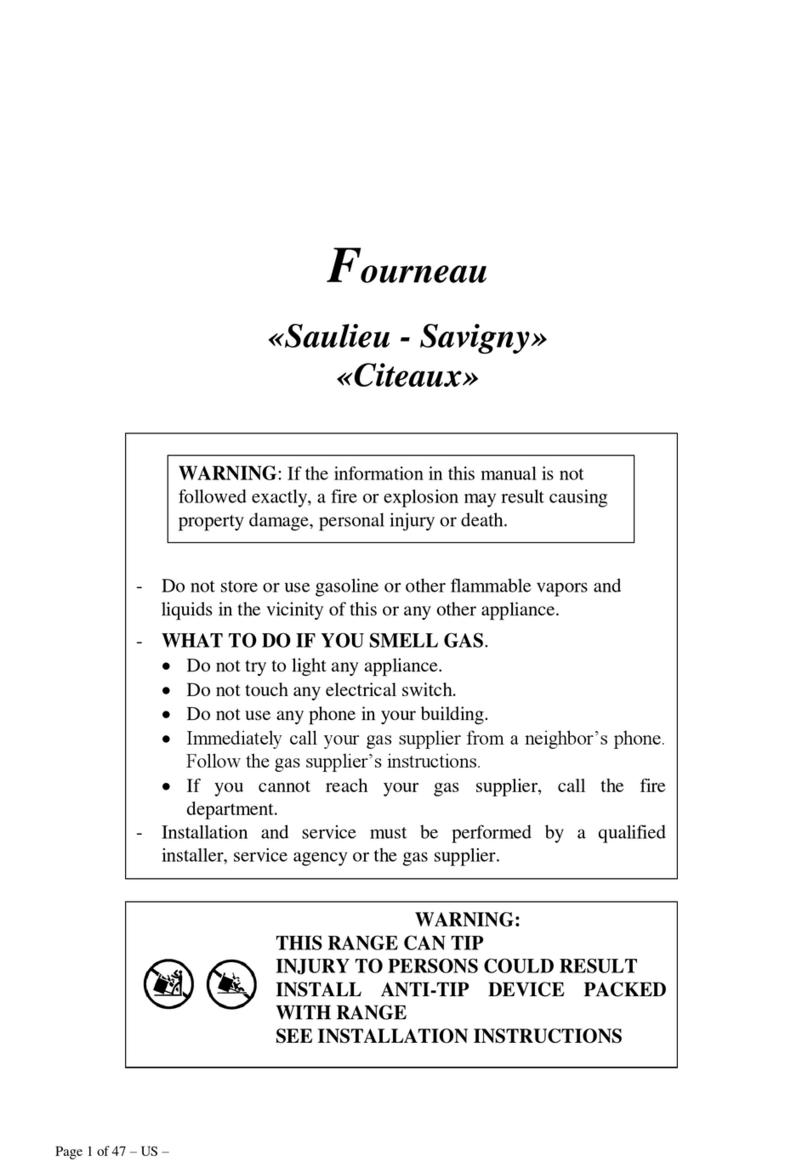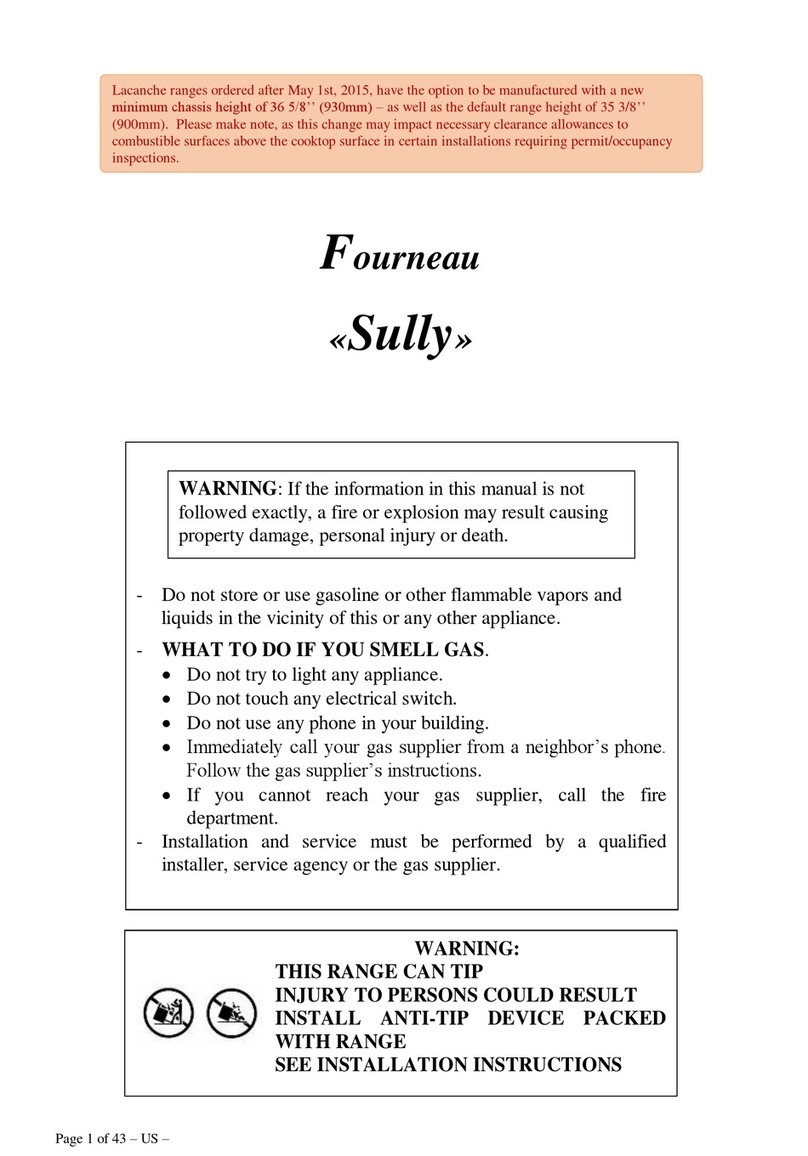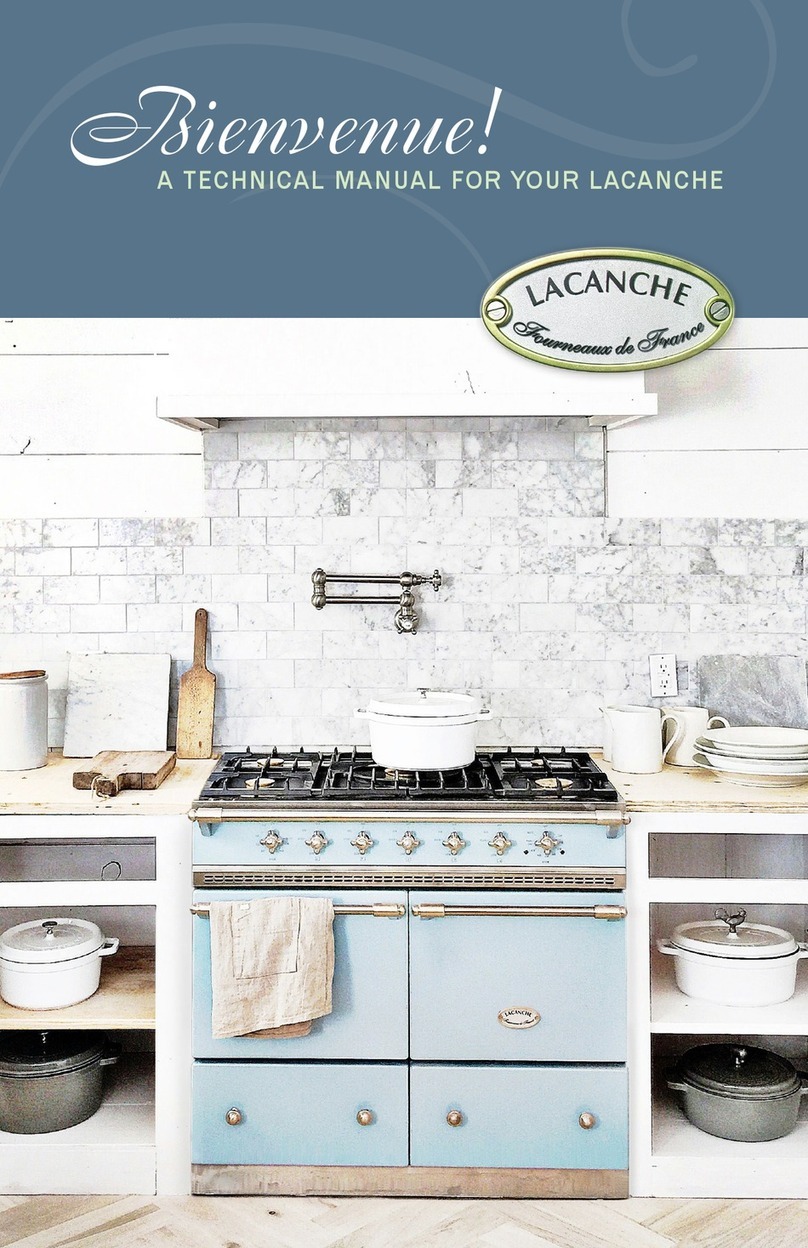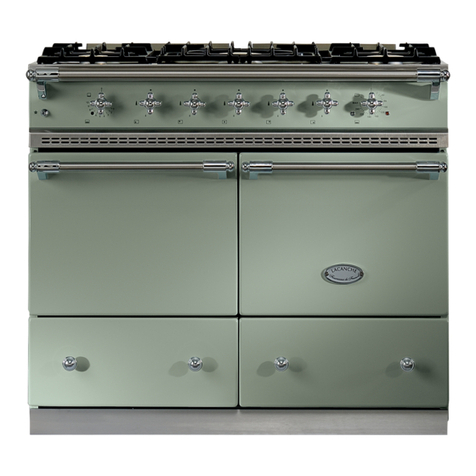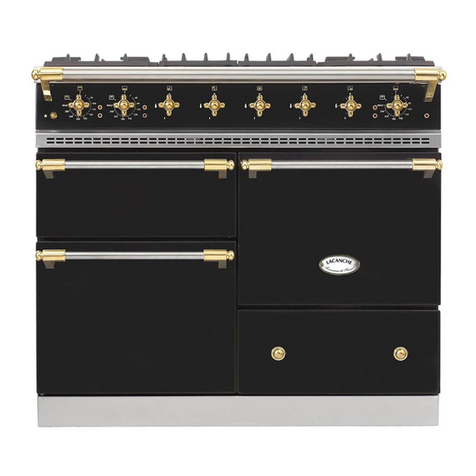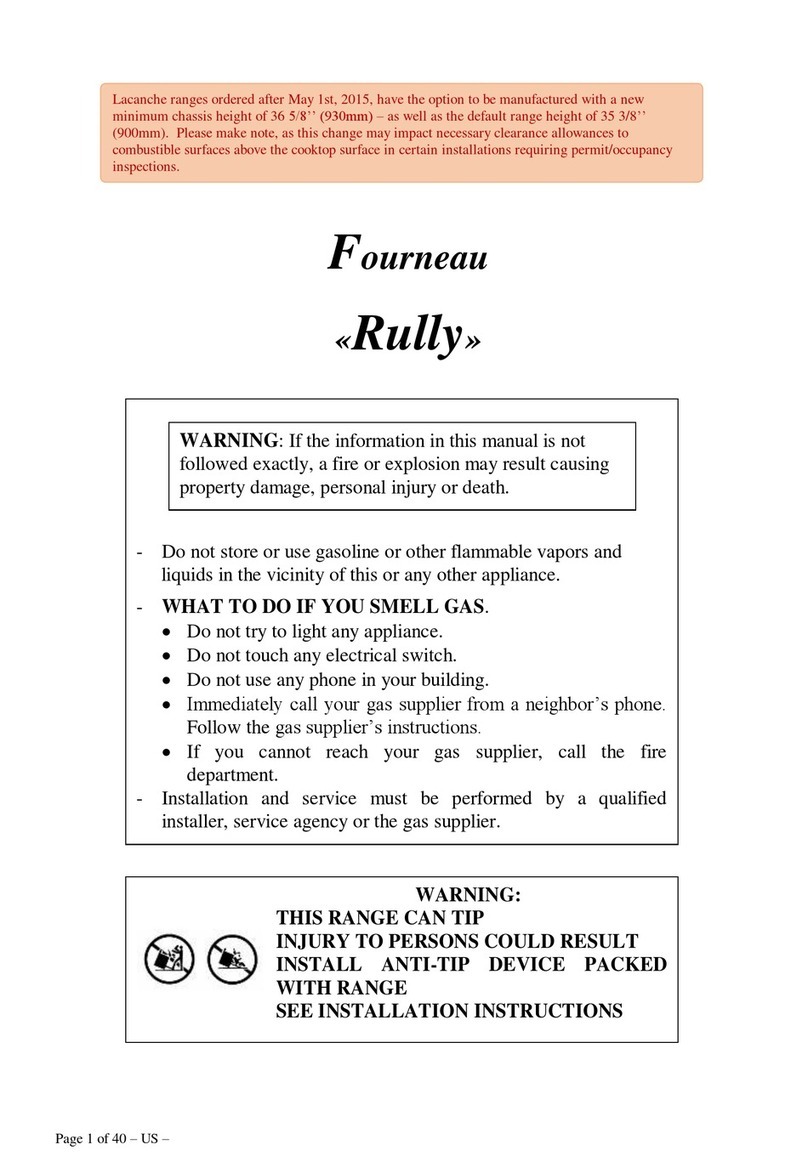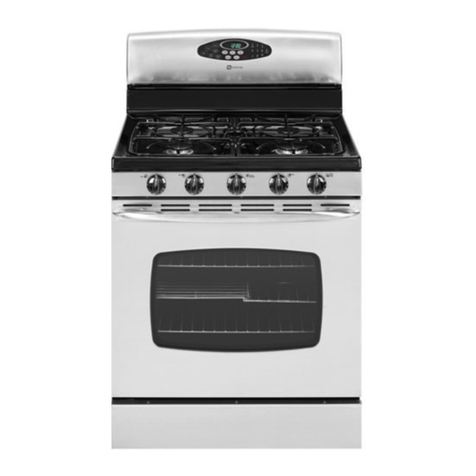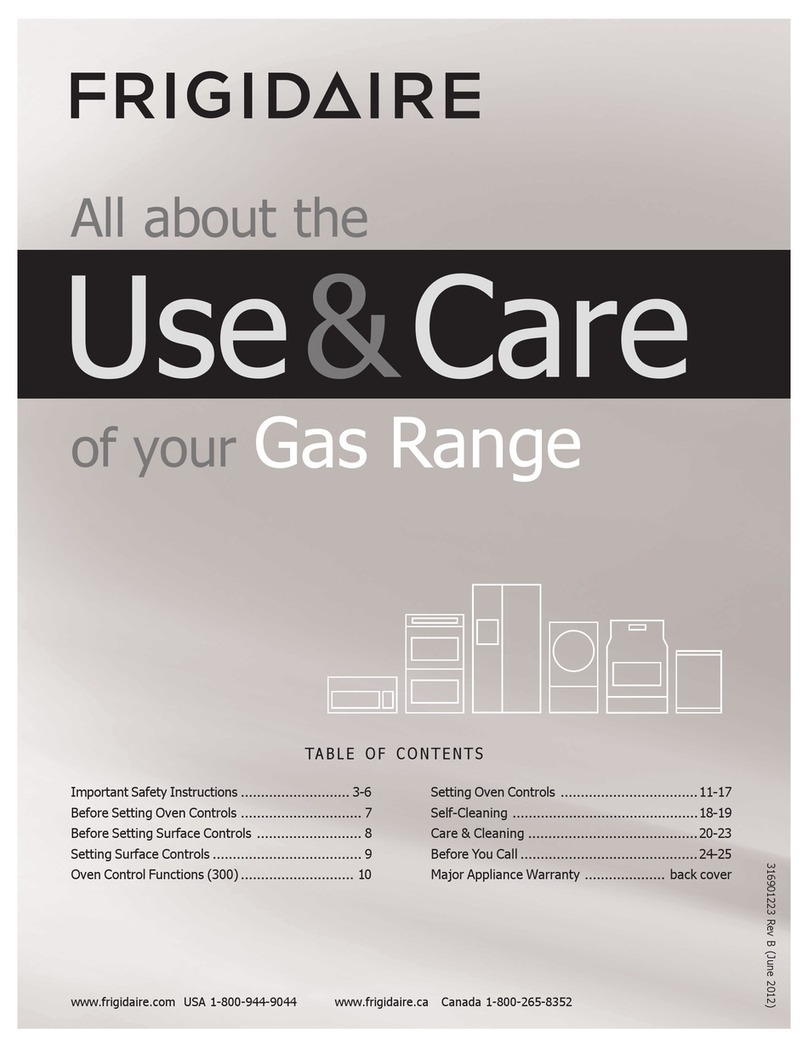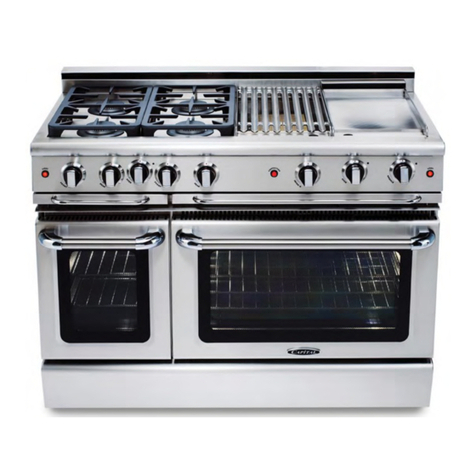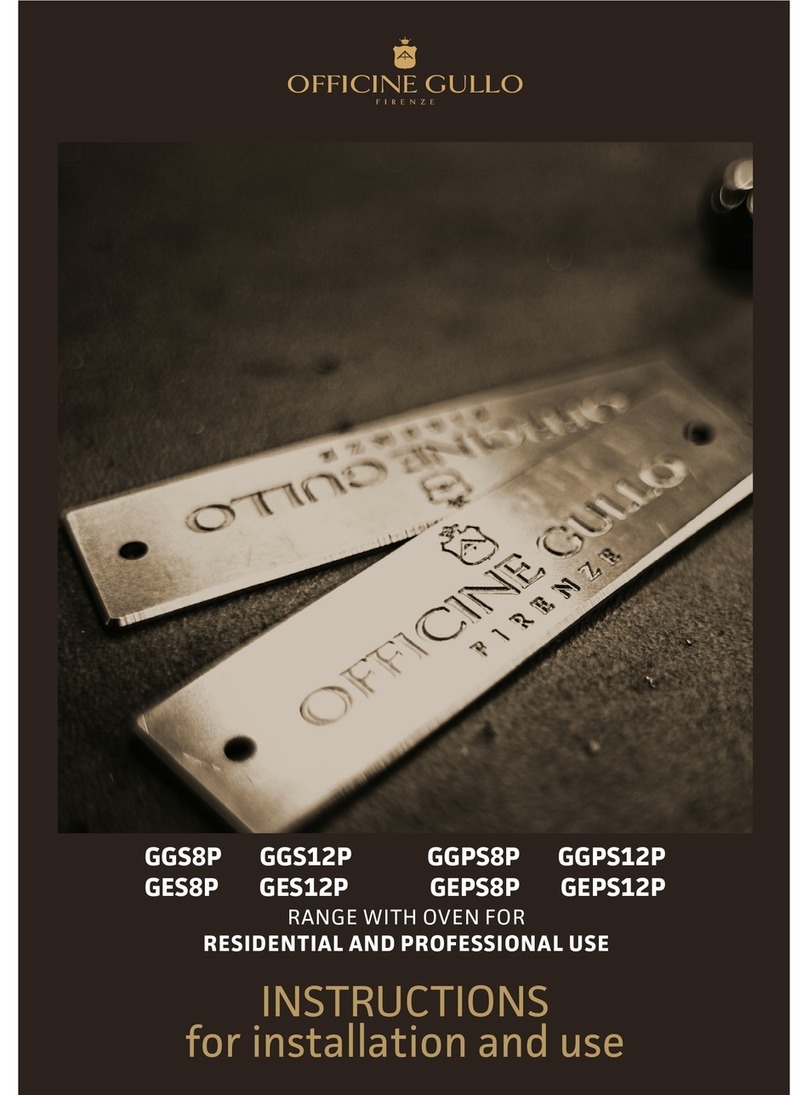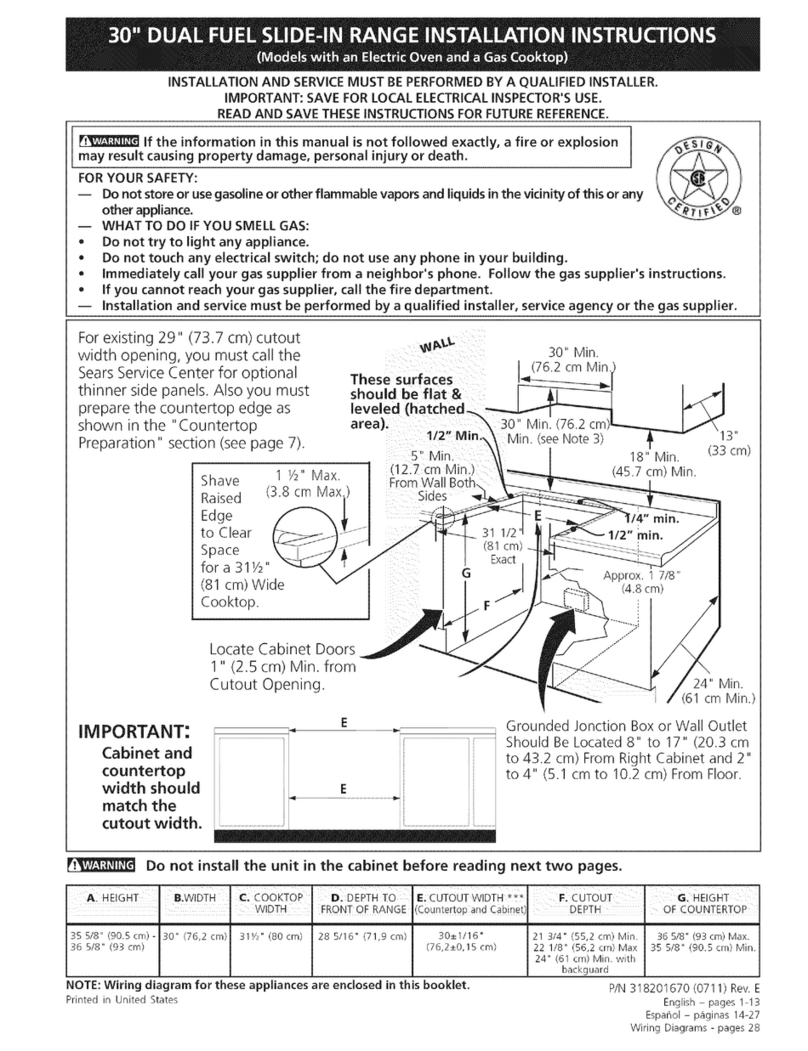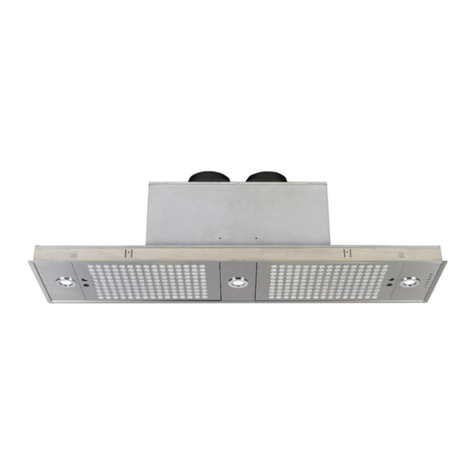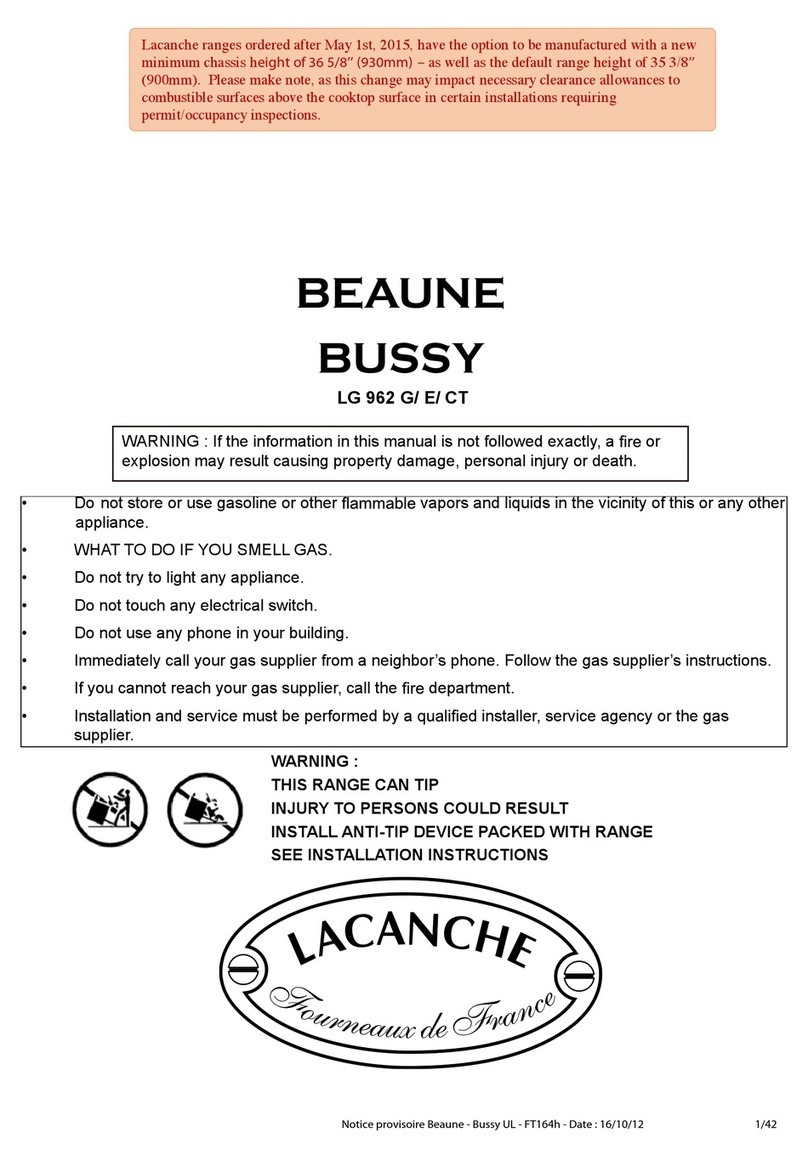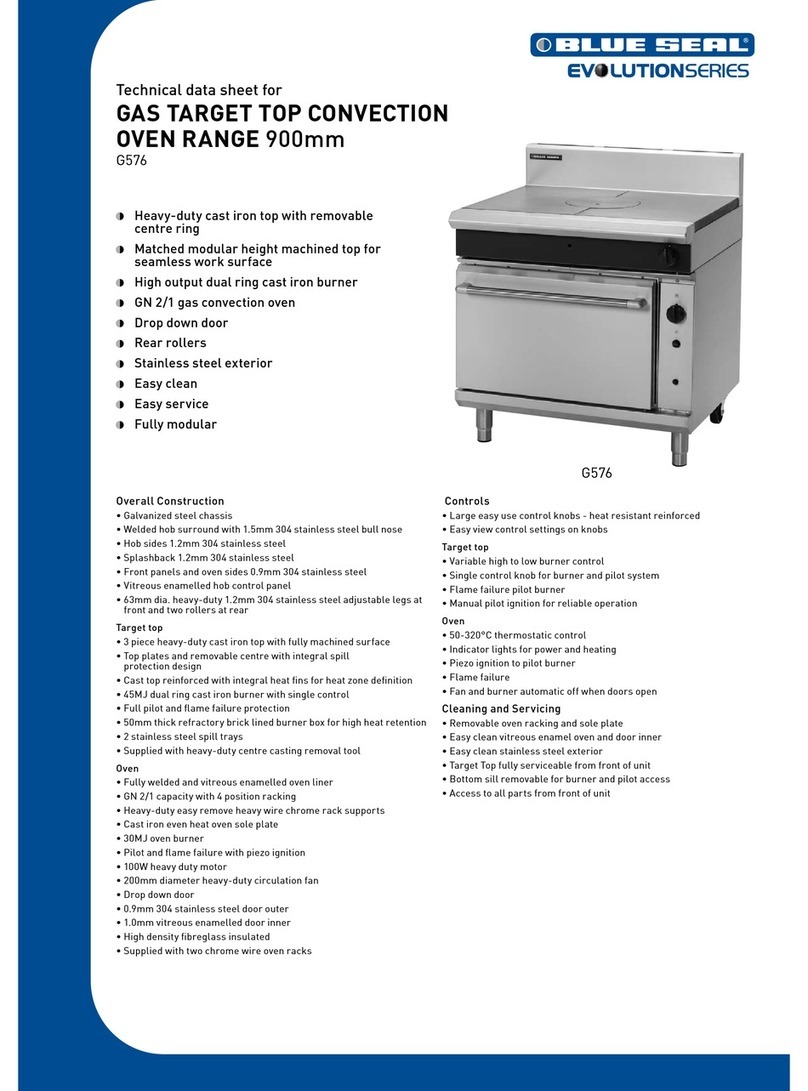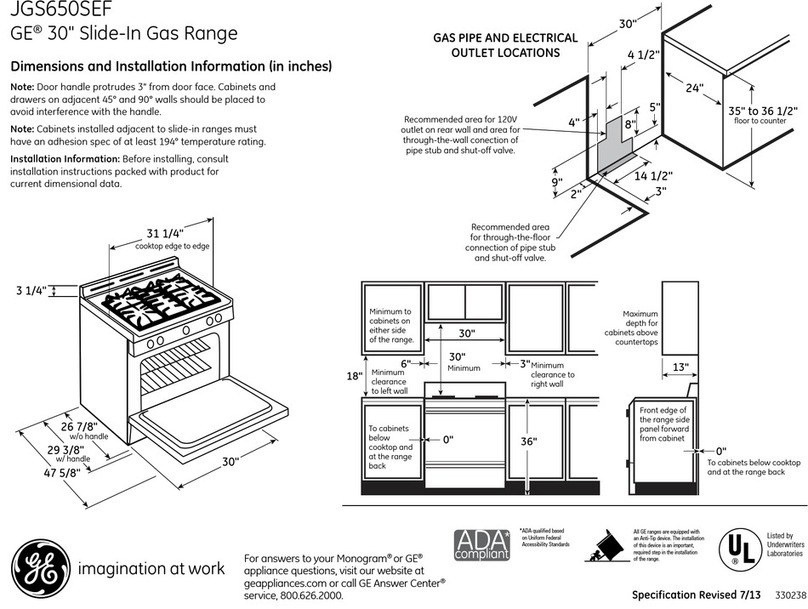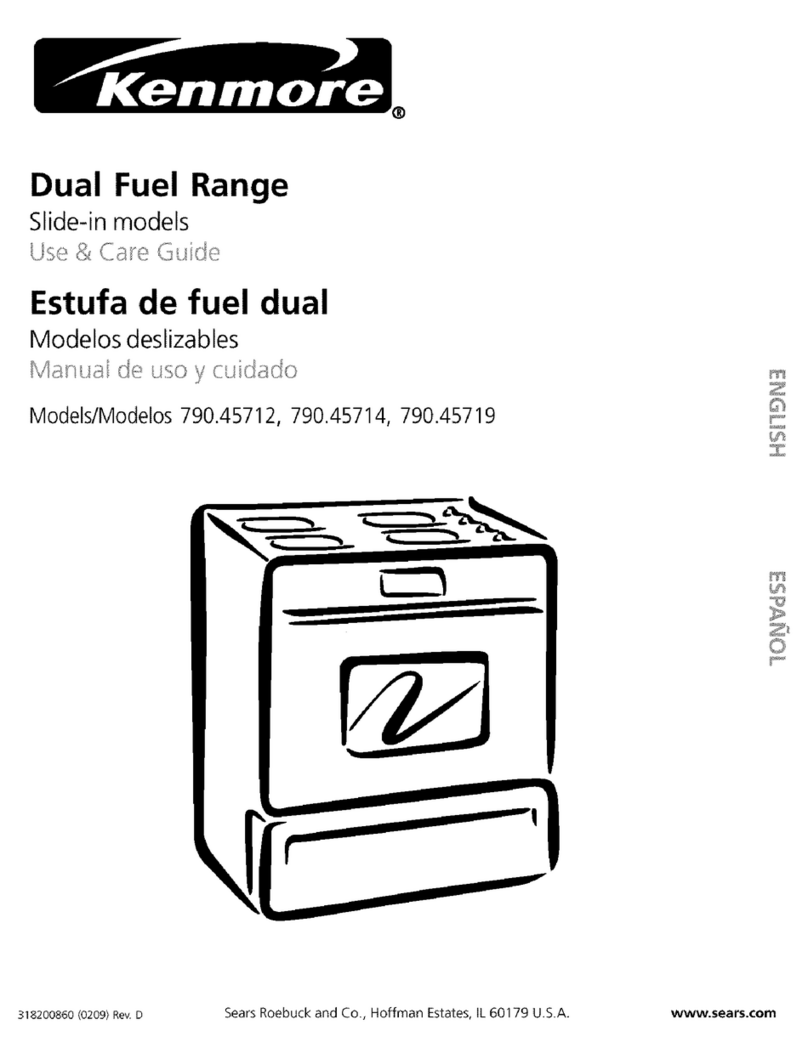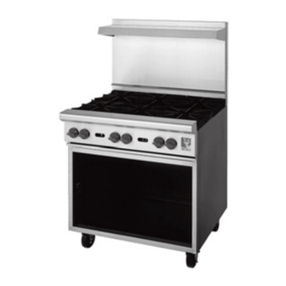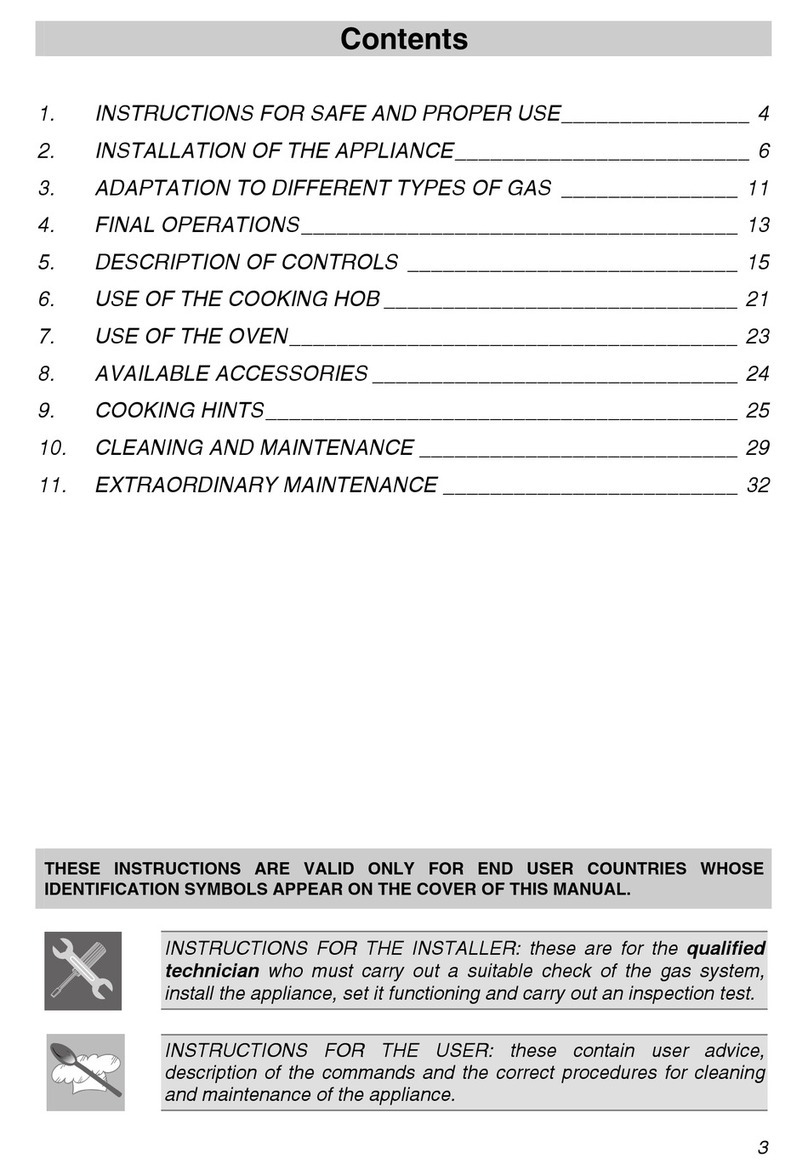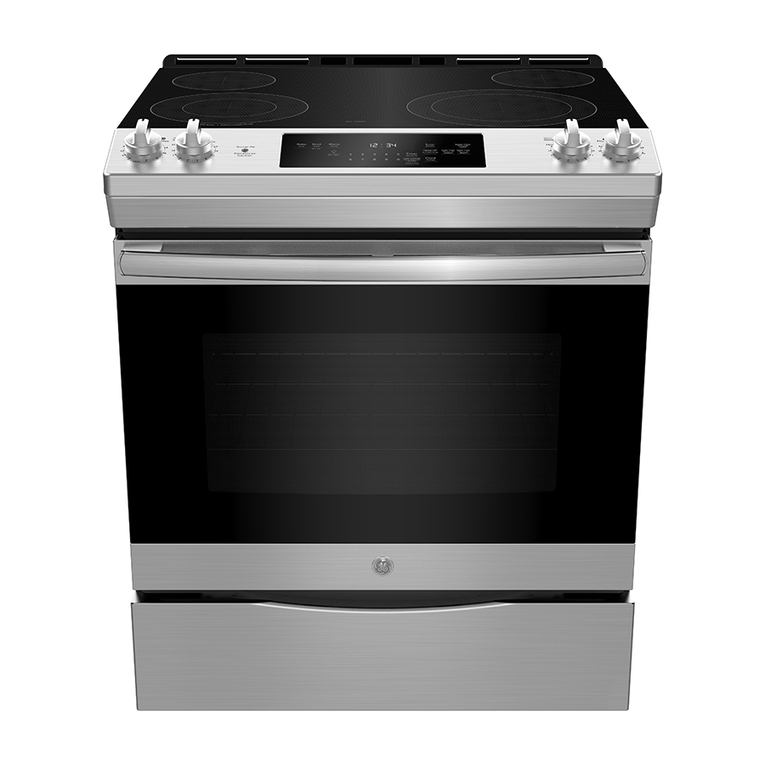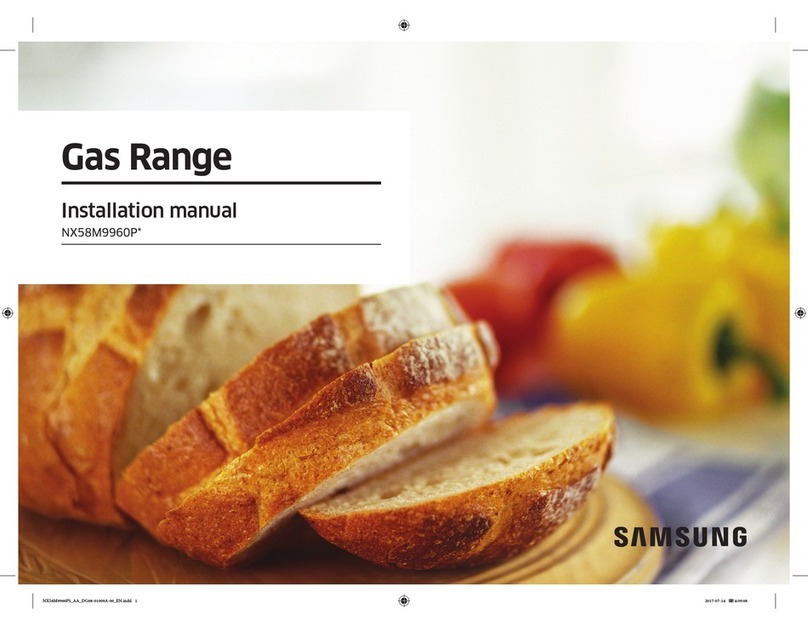
SECTION 1. CHECKLIST OF ITEMS
Check that the following items have been supplied:
1 extractor hood (Complete with blower motor, lighting, mains supply cord and grease filter(s)
SECTION 2. EXTRACTION PERFORMANCE
The most important influence on the performance of the extractor is the design of the ducting which takes the exhaust air from the
extractor to the outside. The duct route should be a prime consideration during the initial stages of the kitchen design. Please note
the following:
The extractor is provided with a spigot(s) suitable for connecting 150mm diameter duct.
Note: 150mm is the minimum duct diameter consistent with efficient extraction.
Double blower (fan) models will require two independent duct runs.
The exhaust duct route length should be kept as short as possible with as few bends as possible.
The most efficient configuration is to duct straight through an outside wall so try to position the cooker against an outside wall
when designing your kitchen layout.
The hood is vented from the top exhaust. Use the position which gives the shortest duct route length and least number of bends.
A route with more than two 90 bends will significantly degrade the performance of the extraction system. Keep bend radii as
large as possible to maintain a smooth airflow without vortices; avoid kinks in flexible ducting; pull flexible ducting taut over
straight runs to ensure that the internal surface is as smooth as possible.
Rigid 150mm diameter (or equivalent rectangular) ducting should be considered for long or complex duct runs (which must be
sourced separately).
DO NOT REDUCE THE DUCTING DIAMETER OF 150MM AS THIS WILL REDUCE THE EXTRACTORS PERFORMANCE THIS
COULD RESULT IN DAMAGE TO THE MOTOR WHICH WOULD NOT BE COVERED BY WARRANTY.
SECTION 3. IMPORTANT INFORMATION
The following minimum headroom is required to accommodate the cooker and hood:
Cooker-to-hood clearance
(min):
Cooker-to-hood clearance when
fitted with Lacanche Backsplash
The minimum distance between the range hob burners and the bottom of the extractor is essential to prevent overheating of the
extractor and its components. When Fitting a Lacanche
Please also note that a 90 deg bend in the flexible ducting will require 215mm minimum headroom to give a smooth radius with
no kinking.
If ducting the FMPS100 extractor into a chimney it is recommended that the chimney must be lined and that the diameter of the
chimney must be a minimum of 150mm. Consideration must be give to the length of the chimney, a long chimney will reduce the
performance of the extractor.
The exhaust air must not be discharged into a flue which is used for exhausting fumes from appliances supplied with energy
other than electricity, e.g. oil or gas-fired central heating boilers, gas-fired water heaters, etc.
Requirements of the relevant authorities concerning the discharge of exhaust air must be complied with.
Adequate ventilation of the room must be provided when the cooker extractor and appliances supplied with energy other than
electricity (e.g. gas-fired or oil-fired heaters, etc.) are used simultaneously. The room must be provided with vents to allow a
constant flow of fresh air.
Attention: This appliance requires an earth connection
Ensure that the supply voltage corresponds to that marked on the rating label inside the extractor.
The extractor must be isolated from the electrical supply before carrying out any cleaning or maintenance operations.
If the power supply cable is damaged, it must be replaced by the manufacturer, its after-sales service, or a suitably qualified
person.
Pay particular attention to fire risk when frying. To minimise the risk of fire, all instructions relating to cleaning the grease filters
and removing grease deposits must be adhered to.
Do not flambé under the extractor.
The hood has been designed to remove the kitchen smells; any other additional use shall be regarded as non-intended.
This appliance is not intended for use by person (including children) with reduced physical, sensory, metal capabilities, or lack of
experience and knowledge, unless they have been given supervision or instruction concerning use of the appliance by a person
responsible for their safety.
This appliance is for domestic use only.

